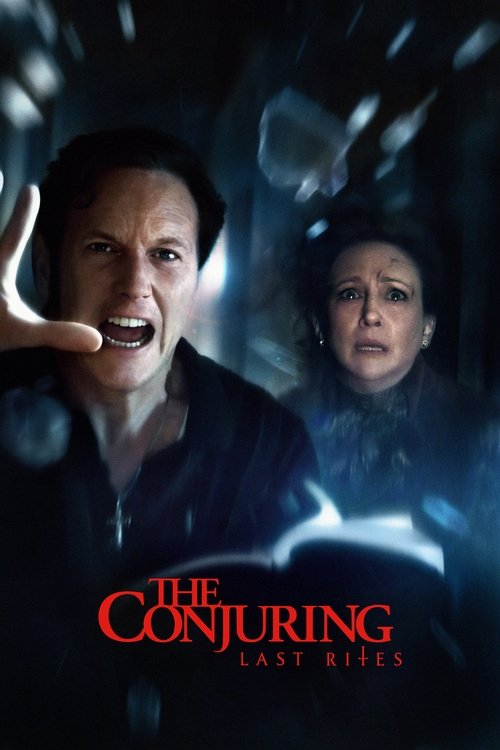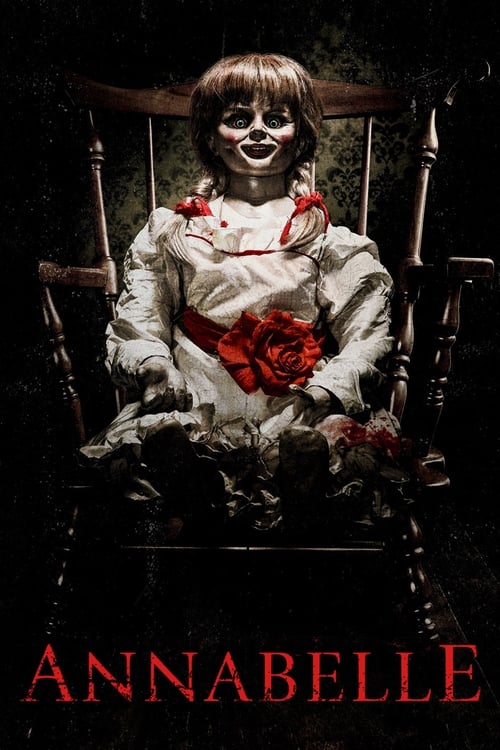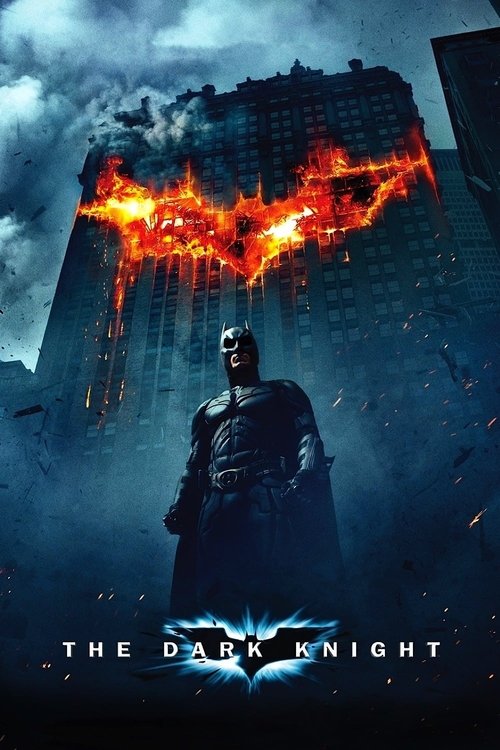
Ask Your Own Question
What is the plot?
In 1967, in the quiet neighborhood of Santa Monica, California, John Form, a dedicated medical student, surprises his pregnant wife, Mia Form, with a rare vintage porcelain doll. The doll is meant as a gift for their unborn daughter, to be placed in the nursery as part of a cherished collection. The couple shares a tender moment, hopeful and excited about the future. On television, a news broadcast plays, detailing the recent Tate murders linked to the Manson Family, casting a dark, unsettling shadow over the evening. The sinister events outside their home foreshadow the nightmare soon to unfold.
Suddenly, the tranquility shatters. From the next-door house, the screams of the Higgins family pierce the night. Mia, alarmed, calls the police while John rushes outside to investigate. The attackers are revealed as the Higginses' estranged daughter, Annabelle Higgins, and her boyfriend, both members of a satanic cult. The violent home invasion is brutal and chaotic. John fights the male assailant, who is eventually shot dead by the arriving police. Meanwhile, Annabelle, the female cultist, retreats into the Forms' nursery clutching the porcelain doll John had given Mia. In a harrowing moment, she slits her own throat, blood splattering the doll's right eye, staining it with a chilling crimson mark. This blood signifies the doll's possession by a demonic entity, binding the evil to the innocent-looking toy.
In the immediate aftermath, the Forms are shaken but determined to move forward. Mia gives birth to a healthy baby girl, whom they name Leah. To escape the trauma, the family relocates to an apartment in Pasadena. However, the doll, which John had discarded in a trash bin, mysteriously reappears among their belongings, setting off a new wave of supernatural disturbances. Mia begins to experience terrifying paranormal activity: the doll moves on its own, doors slam, and heavy books fall from shelves, threatening their daughter. One night, Mia is trapped outside Leah's room, the demon manipulating the environment to isolate and terrorize her. The unseen force's presence is suffocating, a malevolent shadow that grows stronger with each passing moment.
Desperate for help, John and Mia seek the assistance of Father Perez, a local priest. He takes the doll to the church, intending to perform a blessing or exorcism. The church, usually a sanctuary, becomes a battleground. The demon violently resists, injuring Father Perez and reclaiming the doll. The priest is hospitalized, wounded but resolute in warning the Forms that the entity inhabiting the doll is a powerful demon intent on claiming a soul--specifically, that of their daughter Leah. The stakes escalate as the demon's influence tightens its grip on the family.
Amid these horrors, Evelyn, a family friend with a tragic past, emerges as a pivotal figure. She reveals her own torment: she lost her daughter Ruby in a car accident she caused, a guilt that has haunted her and led to a prior suicide attempt. Evelyn's empathy and sorrow deepen the emotional landscape of the story. As the demon's attacks intensify, Evelyn decides to intervene, understanding that sacrifice may be the only way to save Mia and Leah.
The climax unfolds in the Forms' apartment, where the demon corners Mia. The entity manipulates her mind, whispering dark promises and urging her to sacrifice herself to protect her daughter. Mia stands on the window ledge, the doll clutched tightly in her arms, poised to leap into the void. The tension is palpable, the city lights below a stark contrast to the darkness threatening to consume her. Just as Mia teeters on the edge, Evelyn bursts through the door, seizing the doll. In a heart-wrenching act of redemption, Evelyn chooses to give her life. She leaps from the window, the doll disappearing as she falls, her sacrifice overpowering the demon's hold.
Mia and John are left mourning Evelyn's death but are relieved that their daughter Leah is safe. The demon's immediate threat has been vanquished, but the evil is not destroyed. Six months later, the Forms have moved on, their lives seemingly returning to normal, free from the doll's curse. Yet, the final scene reveals the doll resurfacing in an antique shop, purchased by a woman seeking a gift for her daughter. The camera lingers on Annabelle's sinister porcelain face, hinting that the malevolent force endures, waiting for its next victim.
The film closes with a text revealing that the Annabelle doll is now housed in Ed and Lorraine Warren's occult museum, blessed twice a month by a priest. Lorraine Warren's voice echoes a chilling truth: "Evil is real, and while we can contain it, we can never get rid of it." The camera fixates on the doll, as if it might move, before cutting to black, leaving the audience with a lingering sense of dread and the knowledge that the nightmare is far from over.
What is the ending?
In the ending of "Annabelle," Mia confronts the doll in a climactic showdown. After a series of terrifying events, she ultimately sacrifices herself to save her baby, Leah. The film concludes with the doll being placed in a glass case at a museum, hinting at the ongoing threat it poses.
As the film approaches its climax, Mia, played by Annabelle Wallis, finds herself in a desperate situation. The tension escalates as she realizes that the malevolent force tied to the doll, Annabelle, is not just a figment of her imagination but a real and dangerous entity. The atmosphere is thick with dread as Mia's husband, John, portrayed by Ward Horton, is away, leaving her to face the terror alone.
In a pivotal scene, Mia is at home with her newborn daughter, Leah. The once serene environment has transformed into a nightmarish landscape filled with shadows and whispers. Mia's maternal instincts are heightened as she senses the danger surrounding her child. The doll, Annabelle, becomes a focal point of her fear, its porcelain face seemingly mocking her as it sits innocently on the shelf.
As the night deepens, Mia experiences a series of horrifying encounters with the doll. She hears unsettling noises and sees glimpses of a dark figure lurking in the corners of her home. The tension builds as she frantically searches for a way to protect Leah. In a moment of sheer terror, she discovers that the doll has moved on its own, a clear indication of the supernatural forces at play.
In a desperate attempt to rid herself of the evil, Mia decides to confront the doll directly. She recalls the events that led to the doll's possession, including the brutal attack by the cultists that left her and John traumatized. This backstory fuels her determination to end the nightmare. She gathers her courage and approaches the doll, demanding that it leave her family alone.
The confrontation reaches its peak when Mia realizes that the only way to save Leah is to confront the entity head-on. In a harrowing moment, she sacrifices herself, allowing the dark force to take her instead of her child. This act of selflessness is a testament to her love as a mother, showcasing her willingness to face the ultimate horror to protect her daughter.
As the dust settles, the film shifts to a scene in a museum where the doll is encased in glass, a chilling reminder of the evil it harbors. The curator explains to visitors that the doll is cursed, warning them of the dangers associated with it. This final scene serves as a haunting conclusion, suggesting that the threat of Annabelle is far from over.
In terms of character fates, Mia's sacrifice ultimately saves Leah, who is left unharmed but forever marked by the trauma of the events. John, upon returning home, is left to grapple with the aftermath of the horror that unfolded, his wife lost to the darkness. The film closes with a lingering sense of dread, as the camera pans away from the doll, leaving the audience with the unsettling notion that evil can never truly be contained.
Is there a post-credit scene?
The movie "Annabelle," produced in 2014, does not have a post-credit scene. After the film concludes, the credits roll without any additional scenes or content. The story wraps up with a focus on the main narrative, leaving no further revelations or teasers for the audience after the credits.
What is the significance of the doll Annabelle in the story?
The doll Annabelle serves as a conduit for malevolent spirits, particularly after being used in a ritual by a satanic cult. Its presence in the home of Mia and John forms the crux of the horror, as it becomes a source of terror and supernatural occurrences.
How does Mia's character evolve throughout the film?
Mia starts as a hopeful expectant mother, excited about her new life with John. However, as the supernatural events unfold, her emotional state shifts from joy to fear and desperation, showcasing her resilience as she fights to protect her family from the evil that the doll brings.
What role does the character of Father Perez play in the story?
Father Perez acts as a spiritual guide and protector. He is the one who recognizes the evil associated with the doll and attempts to help Mia and John understand the danger they are in, ultimately leading to a confrontation with the malevolent forces.
What events lead to the initial haunting in Mia and John's home?
The haunting begins after Mia and John are attacked by the cult members, who are drawn to the doll. Following the violent incident, the doll becomes a focal point for the supernatural occurrences, leading to escalating terror in their home.
How does the film depict the relationship between Mia and John?
Mia and John's relationship is portrayed as loving and supportive, especially in the beginning. However, as the haunting intensifies, their bond is tested by fear and the strain of protecting their unborn child, revealing their vulnerabilities and deepening their commitment to each other.
Is this family friendly?
"Annabelle," produced in 2014, is not considered family-friendly due to its horror themes and intense scenes. Here are some potentially objectionable or upsetting aspects that may affect children or sensitive viewers:
-
Violence and Threats: The film contains scenes of violence, including physical attacks and threats against characters, which can be distressing.
-
Supernatural Elements: The presence of demonic forces and the portrayal of a haunted doll can be frightening, especially for younger audiences.
-
Disturbing Imagery: There are moments featuring unsettling visuals, such as blood and injuries, which may be graphic and disturbing.
-
Tension and Suspense: The film builds a significant amount of tension and suspense, leading to jump scares that can be alarming.
-
Themes of Fear and Isolation: The emotional states of characters often revolve around fear, anxiety, and isolation, which may resonate negatively with sensitive viewers.
-
Parental Figures in Distress: Scenes depicting parental figures in danger or distress can be particularly upsetting for children.
Overall, the film's horror elements and intense emotional experiences make it unsuitable for a younger audience or those sensitive to such themes.



























